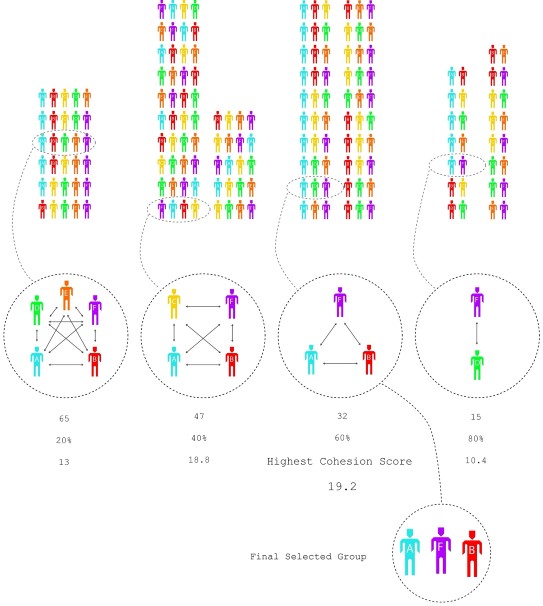Curatron

Transcription
Narrator:
When selecting art for an exhibition like this one, curators can find it difficult to distance themselves from the opinions of their peer groups. Curators can easily fall into the trap of limiting themselves to art and artists that they already know, or that they have some kind of connection with.
That’s why the curators of I Call It Art have taken a new approach and made use of a conceptual artwork that takes the form of a computer program – a series of algorithms created by the artist Cameron MacLeod. The program is known as Curatron.
This is how it worked: artists registered their interest in exhibiting here in the Light Hall. Then each artist submitted an anonymous selection of three works, chosen from the works submitted by other artists, that they would like to exhibit with. Thereafter, the Curatron algorithms selected an ideal combination of artworks, based on the wishes of the artists themselves.
Max:
I think it’s a kind of cool way of selecting art. In any case, I’ve never heard before of anyone using algorithms for this purpose, so we can’t have a go at them for not having tried it.
Narrator:
This is Max, who is 21 years old. He, too, has been thinking about how we often tend to share the opinions of the groups we hang out with. And that’s why the National Museum entrusted Curatron with the task of selecting the artworks that you’ll find on display inside the silver-coloured mini-museum here in the Light Hall.
Max:
It’s kind of like how we often notice that people are friends with people who resemble them. Perhaps it’s something that happens a bit sub-consciously, because it makes us feel a bit more secure?
Narrator:
Although it feels safe to keep within our accustomed limits, it can be good to break with established patterns and try new things from time to time. By looking for new ways of exhibiting new and excellent art, for example.